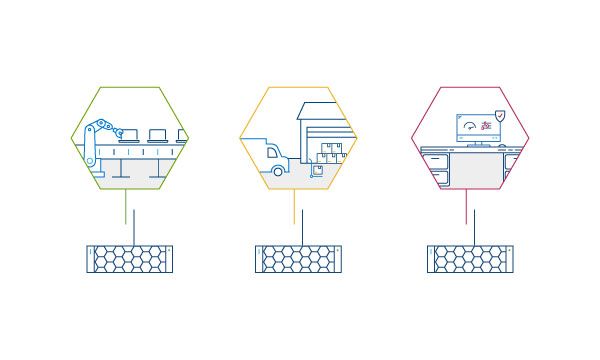Today, the rise of 5G, smart devices, Internet of things (IoT) and high‑speed connectivity are creating a data deluge. Many industries such as manufacturing, retail and oil and gas are learning to harness that deluge by using edge computing to help them act on data near its point of creation to generate immediate value.
However, within these industry verticals, IT organizations are drowning in complexity at the edge. Vendors, analysts and solution providers have typically addressed use cases for operational technology (OT) groups individually, installing dedicated, siloed devices and controllers for each application or use case.
This situation doesn’t just create silos and complexity for IT by creating an environment with disparate management and support needs. It doesn’t just impede the free flow of information throughout the organization by trapping data in discrete systems. It doesn’t just endanger security by expanding and splintering the attack surface for cybercriminals. It also hurts OT, because by running these operations on separate stacks, they are giving up performance and efficiency gains that could be achieved by running on a modern, consolidated infrastructure that provides more performance and reliability than single systems alone can muster.


For OT, that means looking beyond their own functional responsibilities and realizing that unifying the underlying infrastructure provides better performance, reliability, security and scalability than going it alone. For IT, that means understanding that OT has very real concerns and needs around their individual activities, and these can be recognized and better served by using years of IT experience and best practices to simplify the edge and provide universal access to consolidated IT resources.
Adopting a modern, consolidated infrastructure breaks through data silos and gives you a common platform from edge to core to cloud. This helps you:
◉ Do more with less. Breaking down infrastructure silos means that you can actually do more with less by consolidating applications onto less infrastructure that is more efficient to administer. It also enables high availability and higher performance at a lower total cost. The result is a better platform for all applications.
◉ Simplify management. The proliferation of vertically integrated, purpose-built solutions can create a management nightmare that requires dealing with multiple vendors for support. The consistency of a unified infrastructure simplifies management and reduces operational costs. Simplifying and standardizing IT with a building-block approach and unified management tools will also allow you to scale more easily as you grow and add different use cases while maintaining the same management experience across the entire infrastructure.
◉ Reduce security risks. Distributed data and infrastructure expand the cyberattack surface and increase complexity, making security a challenge. Consolidating infrastructure enables stronger end-to-end security by enabling IT to secure a reduced infrastructure landscape in a consistent manner.
If you’re ready to standardize and consolidate infrastructure into a powerful system that can deliver benefits across your organization, be sure to look for the right partner. One with an end‑to‑end‑to‑edge vision backed by proven expertise, a complete portfolio of solutions, and a rich, open partner ecosystem to help you unlock value for your diverse use cases.
Source: dell.com







0 comments:
Post a Comment